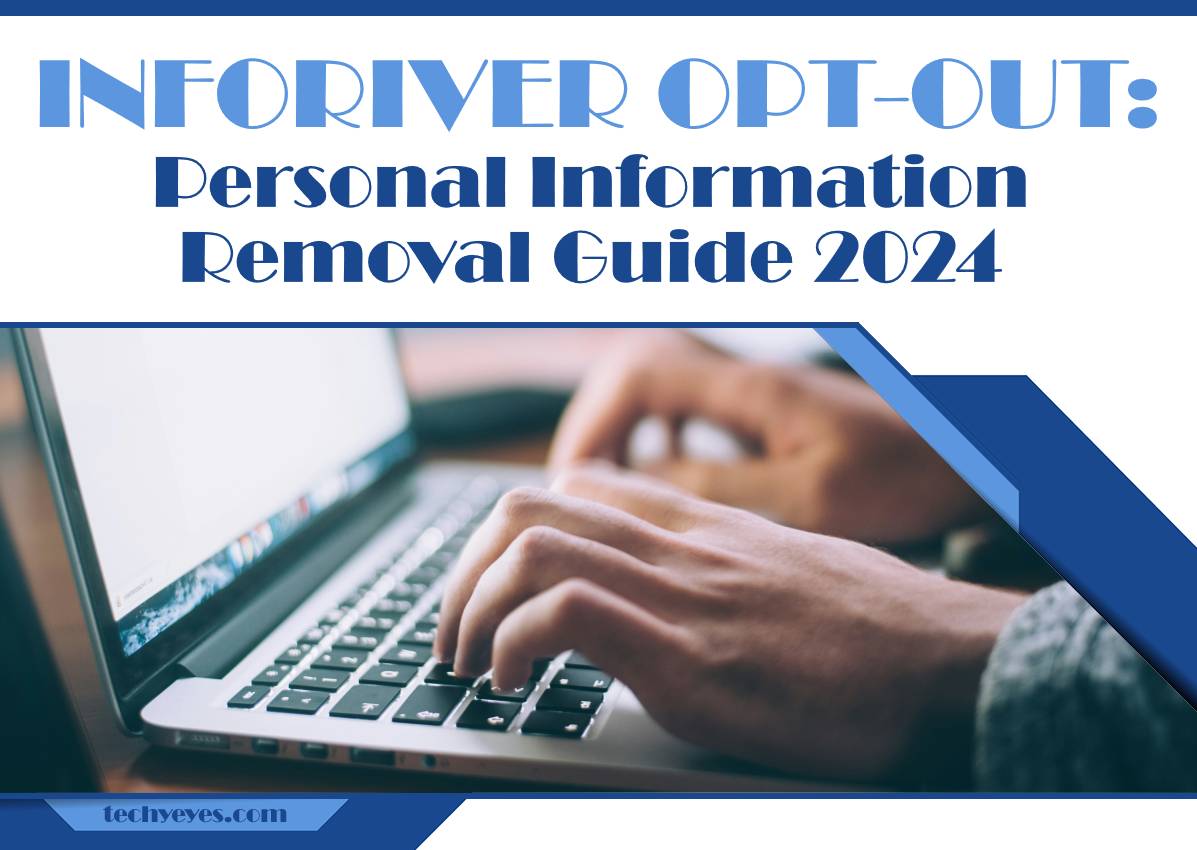In an age where data reigns supreme, the question of privacy has never been more pressing. With every click and scroll, our personal information is collected, analyzed, and often used in ways we might not fully understand. Inforiver, a prominent player in the data aggregation world, provides valuable insights but also raises concerns about how our information is utilized. If you’ve ever felt uneasy about your online footprint or simply want to regain control over your digital identity, you’re not alone.
As 2024 unfolds with heightened awareness around data privacy rights and regulations, many individuals are seeking ways to opt out of unwanted data collection practices—Inforiver included. This comprehensive guide will walk you through effective steps to remove your personal information from their database while ensuring that your digital presence aligns with your comfort level. Whether you’re a tech-savvy individual or just starting on your journey towards online privacy, this article aims to empower you with knowledge and actionable strategies for taking back control of your personal information.
What is Inforiver and Its Purpose?
Inforiver is a powerful data management tool designed to help organizations streamline their analytics and reporting processes. By integrating seamlessly with existing data systems, Inforiver enables users to visualize complex data sets, derive actionable insights, and facilitate more informed decision-making. Its primary purpose lies in enhancing operational efficiency; users can interactively explore their data with easy-to-use features that promote collaboration among team members.
What sets Inforiver apart is its user-centric approach. Unlike traditional business intelligence platforms that often require technical expertise, Inforiver simplifies the process with intuitive visualizations and straightforward dashboards. This empowers individuals from various departments—whether finance, marketing, or operations—to engage meaningfully with data without being reliant on IT teams. As businesses increasingly prioritize data-driven strategies, tools like Inforiver not only democratize access to critical information but also catalyze innovative practices across organizations seeking a competitive edge.

Importance of Personal Information Privacy
In today’s digital landscape, where every click and interaction is meticulously tracked, understanding the importance of personal information privacy has never been more critical. Essentially, your personal data is a treasure trove for companies and advertisers who thrive on insights gathered from your online behavior. When individuals underestimate the value of their information, they inadvertently expose themselves to risks that extend beyond mere spam emails—they become targets for identity theft, financial scams, and invasive marketing strategies. By prioritizing personal privacy, individuals reclaim control over their narratives and ensure that their data serves them rather than being exploited.
Moreover, personal information privacy isn’t just about individual safety; it’s a societal issue with broader implications. As technology evolves, so does the sophistication of threats to our privacy rights. Strikingly, a study reveals that public awareness around these threats remains worryingly low. This lack of awareness creates an environment conducive to complacency where people simply accept intrusive practices as the norm—potentially compromising not only their security but also undermining democracy itself through misinformation and manipulation campaigns fueled by unregulated data use. Hence, advocating for one’s right to personal privacy becomes an act of empowerment: it fosters informed consent in data handling while promoting accountability among organizations tasked with safeguarding sensitive information.
Eligibility for Opting Out of Inforiver
To determine your eligibility for opting out of Inforiver, it’s essential to first understand the criteria they utilize when processing personal information. Typically, individuals who have had their data collected through online interactions, whether via websites or mobile apps associated with Inforiver, may qualify for removal requests. However, what’s fascinating is that even if you haven’t directly engaged with these platforms, third-party data brokers could still hold your information based on less than direct associations. This broad net of potential eligibility opens doors for many more individuals than one might anticipate.
Moreover, it’s not just about having personal information stored; awareness of how and why it was collected can significantly impact your decision to opt-out. For instance, understanding the specific types of data gathered—ranging from browsing habits to demographic insights—not only empowers you but allows you to identify any privacy violations that may warrant action. As trends in digital privacy evolve rapidly in 2024, asserting one’s right to remove personal information is becoming an essential part of digital citizenship that stands at the intersection of technology and individual rights.

Step-by-Step Guide to Opt-Out
To successfully opt-out of Inforiver and reclaim control over your personal information, start by navigating to their official website. Look for the privacy settings or a dedicated “Opt-Out” section—companies often prioritize user experience here, making it straightforward to find. Once there, you’ll typically need to provide essential identification details such as your name and email address linked with your profile. This initial step ensures that the request is both valid and secure.
After submitting your information, be prepared to verify your identity through a confirmation email or text message. This double-check system serves as an additional layer of protection for your data. Following verification, you should receive a notification confirming that your request is being processed; ensure you save this acknowledgment for future reference. Generally, processing can take anywhere from a few days up to several weeks depending on their backlog—patience is key!
Lastly, keep track of any changes in terms of privacy policies or data usage practices post-opt-out, as companies sometimes alter how they manage personal information without explicit notice. Regularly checking in will empower you to stay ahead and protect what matters most: your digital footprint! By understanding these nuances, you’re not just opting out but also becoming an informed digital citizen vigilant about online privacy.
Common Challenges During the Opt-Out Process
Navigating the opt-out process can often feel like a tangled web, with users facing unexpected hurdles that can be both frustrating and time-consuming. One common challenge arises from the sheer complexity of privacy policies and user agreements, which are often laden with legal jargon. This makes it challenging for individuals to discern their rights or understand exactly how their information is being used. Tech-savvy users might find themselves overwhelmed by multiple platforms requiring distinct procedures for removal, leading to confusion about where to start.
Additionally, many companies employ tactics that inadvertently complicate the opt-out experience further. For instance, they may not clearly highlight opt-out options within their interfaces, burying them under layers of menus or requiring excessive verification steps that test users’ patience. This deliberate obscurity can deter even the most determined individuals from following through with their requests. As a result, awareness and education about these pitfalls become essential; knowing what obstacles to expect empowers individuals to navigate this landscape more effectively and regain control over their personal data.

How to Verify Your Information Removal
Once you’ve initiated the opt-out process with Inforiver, verifying that your personal information has been removed is crucial. Start by revisiting the website where you initially submitted your request. Look for a verification email or confirmation message that outlines the status of your removal; this can serve as proof of compliance and give you peace of mind. However, don’t stop there—go further by conducting a manual search using various search engines to see if any remnants of your information still exist online.
Additionally, consider employing data monitoring tools designed to keep tabs on personal information across numerous platforms. These tools can notify you when new data matching yours pops up, ensuring you’re always in the loop about what’s out there. If you find that some details remain accessible despite your efforts, it may be time to follow up with Inforiver directly to understand why certain information wasn’t purged from their databases. This proactive approach not only protects your privacy but also enhances accountability within organizations handling sensitive data.
Conclusion: Empowering Your Privacy Choices in 2024
As we navigate the complexities of the digital landscape in 2024, empowering your privacy choices has never been more critical. With an increasing number of companies prioritizing user consent and transparency, you now hold the reins when it comes to your personal information. The rise of privacy-focused technologies and legislation reflects a shift towards greater individual agency, allowing you to take back control from corporations that have relied on data accumulation for far too long.
By actively opting out of unnecessary data collection practices, not only do you safeguard your private life, but you also send a clear message to businesses: valuing consumer consent is paramount. Leverage the tools available at your disposal—whether through Inforiver’s opt-out options or other removal services—to curate a digital presence that truly aligns with your values. This proactive approach empowers not just yourself but contributes to a broader movement advocating for robust privacy rights in our interconnected world. Embrace this opportunity; every step taken toward enhanced privacy is a step toward reclaiming your autonomy in this increasingly surveilled society.

